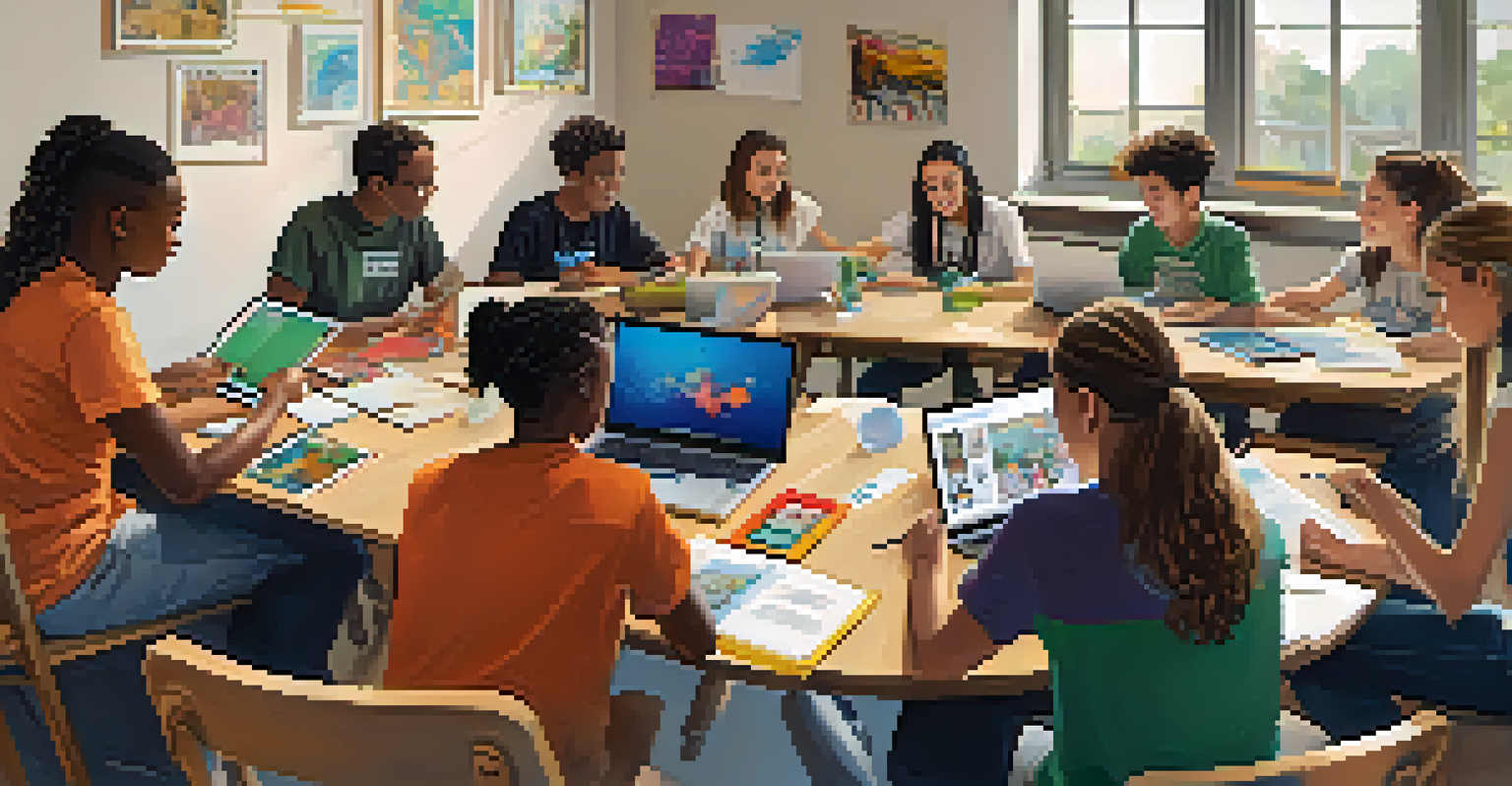How to Create a Learning Environment at Home

Understanding the Importance of a Learning Environment
A positive learning environment is essential for effective education. It sets the tone for how individuals engage with new information. When learners feel comfortable and supported, they are more likely to explore, ask questions, and develop critical thinking skills.
Education is not the filling of a pail, but the lighting of a fire.
Creating a space that encourages learning can significantly impact motivation and retention. Just like a gardener nurtures plants, a well-designed environment can help knowledge flourish. This isn’t just for children; adults benefit too when they feel inspired in their learning pursuits.
Ultimately, a conducive learning environment fosters a love for learning that transcends formal education. It can lead to lifelong curiosity and growth, enabling individuals to thrive in various aspects of life.
Choosing the Right Space for Learning
Selecting an appropriate space is a crucial first step in creating a learning environment. This area should be quiet, well-lit, and free from distractions. Whether it’s a cozy corner of the living room or a dedicated study room, the location should promote focus and creativity.

Consider the layout of the space as well. Comfortable seating, a clutter-free desk, and easy access to resources can enhance the learning experience. Just like an artist needs the right studio to create, learners need an environment that supports their educational endeavors.
Create a Positive Learning Space
A supportive environment fosters engagement and critical thinking, benefiting learners of all ages.
Don’t forget about personalization! Adding elements that reflect the learner’s interests can make the space feel inviting and inspiring. This could be anything from posters of favorite subjects to shelves filled with intriguing books.
Incorporating Organization and Structure
An organized learning space can significantly boost productivity and reduce stress. Create a system for organizing materials, whether through labeled bins, folders, or digital tools. This way, learners spend less time searching for resources and more time engaging with content.
Tell me and I forget. Teach me and I remember. Involve me and I learn.
Establishing a routine can also provide structure, making learning feel more predictable and manageable. Just like a recipe needs clear steps to succeed, having a schedule can guide learners through their educational journey.
Incorporate breaks into the routine to allow for mental rest and rejuvenation. This balance of work and rest can lead to greater focus and a more enjoyable learning experience.
Utilizing Technology for Enhanced Learning
In today’s digital age, technology can be a powerful ally in the learning environment. From educational apps to online courses, there are countless resources that can make learning more engaging. Consider integrating tools like interactive whiteboards or tablets to facilitate exploration and creativity.
However, it's important to set boundaries to prevent distractions from social media or gaming. Just like a ship needs a captain to navigate, learners need guidance to make the most of technology without losing focus.
Encourage a Growth Mindset
Promoting the belief that abilities can improve through effort helps learners embrace challenges and develop resilience.
Encourage learners to use technology thoughtfully, fostering skills such as digital literacy and critical evaluation. This not only enhances the learning experience but also prepares them for a tech-driven world.
Creating a Supportive Community
Learning doesn’t happen in isolation; building a supportive community is crucial. Encourage regular communication with family members and peers to share ideas and resources. Just like a sports team thrives on collaboration, learners benefit from the shared knowledge and encouragement of others.
Consider organizing study groups or discussions, either in person or online. This interaction can stimulate new perspectives and foster a sense of belonging. When learners feel connected, they're more likely to engage deeply with the material.
Remember that support can come in many forms—be it emotional encouragement or practical help with difficult topics. A strong support system can empower learners to tackle challenges with confidence.
Fostering a Growth Mindset
Encouraging a growth mindset is vital in a home learning environment. This means promoting the belief that abilities can be developed through dedication and hard work. Just like a seed grows into a tree with care, learners flourish when they embrace challenges and learn from failures.
Celebrate progress and effort rather than just outcomes. Recognizing small achievements can motivate learners to keep pushing forward. This approach not only builds resilience but also fosters a love for learning that lasts a lifetime.
Foster Community and Collaboration
Building a supportive community enhances learning through shared knowledge, encouragement, and collaboration among peers.
Incorporate discussions about challenges and setbacks to normalize them as part of the learning process. This can help learners view difficulties as opportunities for growth, rather than obstacles.
Encouraging Exploration and Curiosity
A thriving learning environment encourages exploration and curiosity. Allow learners to pursue their interests, whether through projects, research, or hands-on activities. Just like a treasure map leads to hidden gems, following passions can uncover a world of knowledge and excitement.
Create opportunities for experimentation, whether it’s through science projects or creative writing. This freedom to explore can lead to deeper understanding and retention of information. Encourage questions, as they often lead to fascinating discoveries.

Remember to celebrate curiosity! Whether it's through field trips, museum visits, or simple backyard explorations, nurturing a sense of wonder can enrich the learning experience profoundly.